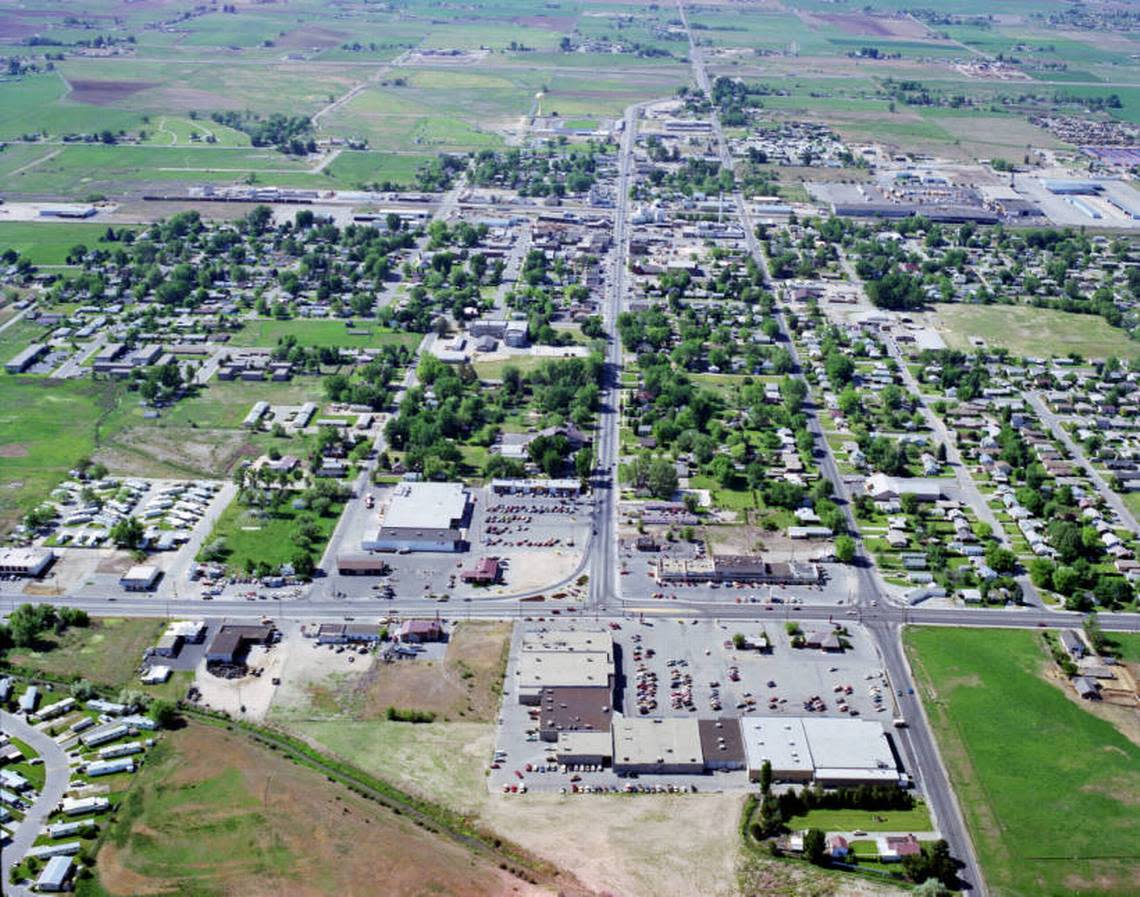Meridian is one of the fastest-growing cities in the U.S. How has it changed?
A town once known for its small dairy farming community has transformed into a city of growth.
From only 10,220 residents in 1990, Meridian’s population grew to more than 10 times its size by 2020, to approximately 117,600 residents, according to the U.S Census Bureau. Meridian was the fourth fastest-growing city in the U.S. by then, according to the census, with a population growth of 56.7% since 2010.
So how has the population spike changed Meridian over the years?
In the early 1900s, Meridian was a business hub for the creamery and dairy industry. Dairy farmers in 1927 established the cooperative Ada County Dairymen’s Association to transport their milk for processing. The cooperative played an important role boosting the local economy during the Great Depression as dairy farmers would supply milk in exchange for monthly checks.
By 1962, the cooperative’s creamery reached over $7 million in total annual sales — offering products such as butter and baby formula. The creamery closed its doors in 1970, and dairy processing moved to Caldwell. The creamery building was demolished in 2006 and replaced with the Meridian City Hall.
Former longtime Mayor Tammy de Weerd told the Idaho Statesman in an interview that for the last two decades, her goal was to make Meridian a family-oriented city, offering more parks, educational opportunities and a safe community.
“I’ve seen Meridian transition from a small town that was reliant on other cities to provide services for our residents — to eat out, recreate and all of that — to a full-service community,” said de Weerd, who moved to Meridian in the ’90s and joined the City Council in 2000.
De Weerd, who served as mayor from 2004 to 2020, said she believes traffic has become the greatest challenge Meridian residents face. She said public safety and emergency services should continue to be put in place to accommodate those living in densely populated areas.
Like De Weerd, Council Member Luke Cavener, who grew up in Meridian in the ’90s, said in a phone interview that some of the growth has improved the city for the better.
Growing up, he said his family would have to drive to Boise access most parks or stores. Now, he can take his children to Walmart less than 1 mile away from his home.

Cavener said public services, such as police and fire stations, have also improved since his upbringing.
“Back in 1990, if your house was on fire, and you lived south of the railroad tracks and a train was coming through town, you were in a lot of trouble,” he said. “We had one fire station. If there was a train coming through, then we weren’t able to get that fire truck to Meridian Greens in time, a neighborhood that existed in the ’90s.”
Meridian now has six fire stations with two additional stations under construction with an expected opening date in the fall, city spokesperson Kelsey Winnett told the Statesman.
While the growth has made life easier for many residents, it also comes with a cost, Cavener said. He said growth has put a strain on schools and roads, referring to capacity concerns in the West Ada School District and traffic issues. The Statesman previously reported that Mountain View High School and Owyhee High School will be over capacity by a combined total of nearly 600 students.
“Those are the hardest pieces that we as a city council, and myself as a citizen, wrestle with,” he said. “I don’t have any real authority to solve those two problems, and we have to rely on other agencies to make that happen.”
Why are people moving to Meridian?
In 2022, the U.S. Census included Meridian in its top 15 growing cities in the country alongside Nampa and Caldwell. According to the data, Meridian grew at a rate of 5.2% between July 2020 and July 2021.
Cavener said families used to move to Meridian for its affordability and its school district.
“My parents moved to Meridian in the early ’80s because it was a place where they could afford to buy a house with a yard,” he said. “People chose Meridian because it gave them the ability to have the American dream at a price they can afford.”
Meridian housing prices have risen since then, but Cavener said the city has become a “happy medium” between Eagle in Boise.
According to real estate data from Redfin, the median price for a Meridian home in December was $500,000 — slightly higher than the cost of a home in Boise with a median price of $485,000, but less than the median price of a home in Eagle at $899,000.
While Meridian is no longer as affordable as it once was, Cavener said he believes the city continues to grow because individuals are attracted to the city’s low crime rate, its well-known school district and the ability live in close proximity to one’s workplace.
According to statistics from the Idaho State Police, Meridian reported less crime in comparison to neighboring cities. In 2021, Meridian reported 3,326 crimes per 100,000 inhabitants, while Boise stood at 4,897, Caldwell at 4,774 and Nampa at 5,974 crimes per 100,000 inhabitants.
Additionally, data from the State Department of Education showed students in the West Ada School District scored higher than the state average across all subjects in standardized state tests. The district also had a 86.7% graduation rate, slightly higher than the state average of 80% in 2021.
Cavener said Meridian has become a “self-sustaining community” where people can live, work and provide for their families.
“In Meridian, working families can have great quality of life, a great home and be able to raise their kids,” he said.
